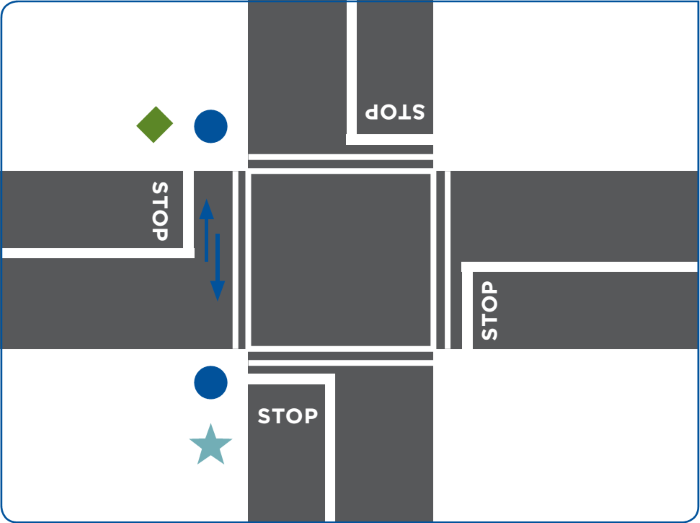

Setting off without performing observations. The most common errors that people make during their driving tests, according to the AA, are: Other serious offenses include mounting the curb, as well as traffic violations like speeding, going through a red light, or crossing a solid line. On both the yard and road tests, for example, allowing the car to roll back while on an incline will result in an immediate failure. The best way to prepare for your driving test is to learn which faults are the most commonly made, and which mistakes cost more than others. You must also pass an eye examination before being granted your licence. 
The examiner will make notes for the duration of the test and will score every fault that occurs, with some counting more than others. A quiet road where an emergency stop will take place.The driving centre will have a prescribed route which includes the following: Upon completing these tasks, the examiner will join you in the car and the road test will begin. This requires performing several actions – a three-point turn, alley docking to both the left and right, parallel parking to both the left and right, as well as an incline start. Once this is complete, the examiner will ask you to enter the vehicle and begin the yard test. This involves doing a scan of the car’s exterior and interior to check for any signs that it isn’t roadworthy, such as deflated tyres or non-functioning lights and other equipment. When the test begins, your examiner will ask for an inspection of the vehicle. A vehicle inspection and questions from the instructor.The K53 Driver’s Practical Test will consist of the following phases:
#Emergency stop k53 how to#
This is what you can expect from a driving test, what the most common mistakes are, and how to avoid them.
Fail to demonstrate that you can give a hand signal correctly when instructed to do so.Going for your driving test can be an intimidating endeavour, but there are a few ways that you can prepare to make the process go smoother. Allow the vehicle to roll forward or backwards. Fail to complete a manoeuvre within the allowed number of attempts. Bump any obstacles, mount a kerb or touch a boundary line. Be involved in a collision you could have avoided. Make an uncontrolled or dangerous action. Violate any traffic law, road sign, signal or road marking. Have a mechanical failure of the vehicle. You have been allocated more than 50 penalty points. You exceed the time limit of 20 minutes for the pre-trip inspections and the yard test manoeuvres. If you score more than this allowance you will fail the test. You may accumulate a certain number of penalty points during each part of the test. 
If you pass the yard test you will continue with the road test which will take between 20 and 45 minutes.Ī score sheet is used to evaluate your performance during the test. Light and heavy motor vehicles yard test: 20 minutes including the pre-trip vehicle inspection. How You Are Scored & What You Can Fail On obeying yield signs and traffic lights.turning left and right at intersections.A road test conducted on public roads carrying traffic including:.reversing in a straight line (light vehicles if towing a trailer, and heavy vehicles).left turn (light vehicles if towing a trailer, and heavy vehicles) and.
 parallel parking (light vehicles only). alley docking: reversing into an alley, and driving out again. turning around in the road: ‘three-point-turn’ (light vehicles only). A yard test of your basic manoeuvring skills, away from traffic, including:. Pre-trip inspection of the vehicle’s roadworthiness. The test will be carried out in the following format: What to expect in the examination and on the day of your test: What To Expect In The Test
parallel parking (light vehicles only). alley docking: reversing into an alley, and driving out again. turning around in the road: ‘three-point-turn’ (light vehicles only). A yard test of your basic manoeuvring skills, away from traffic, including:. Pre-trip inspection of the vehicle’s roadworthiness. The test will be carried out in the following format: What to expect in the examination and on the day of your test: What To Expect In The Test








 0 kommentar(er)
0 kommentar(er)
